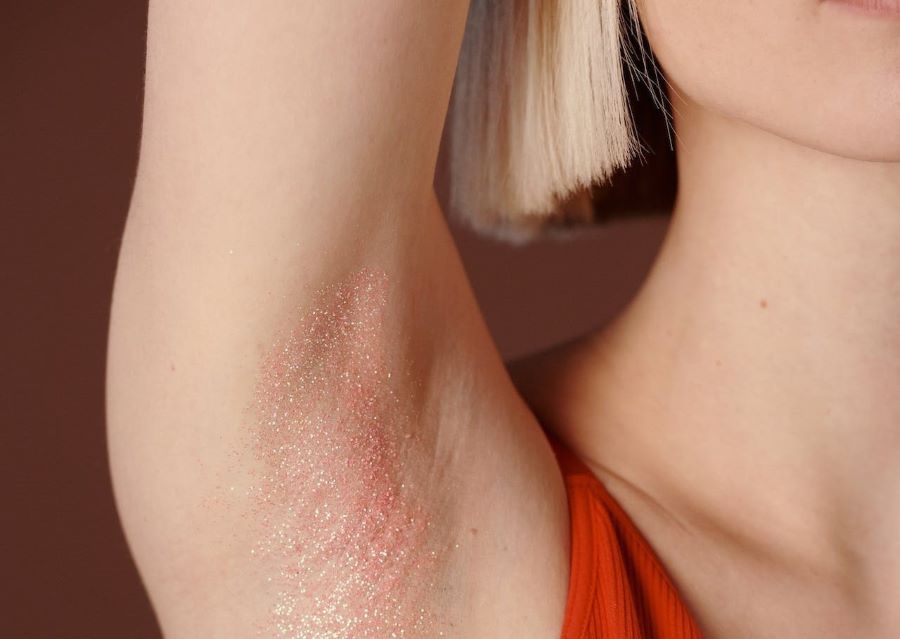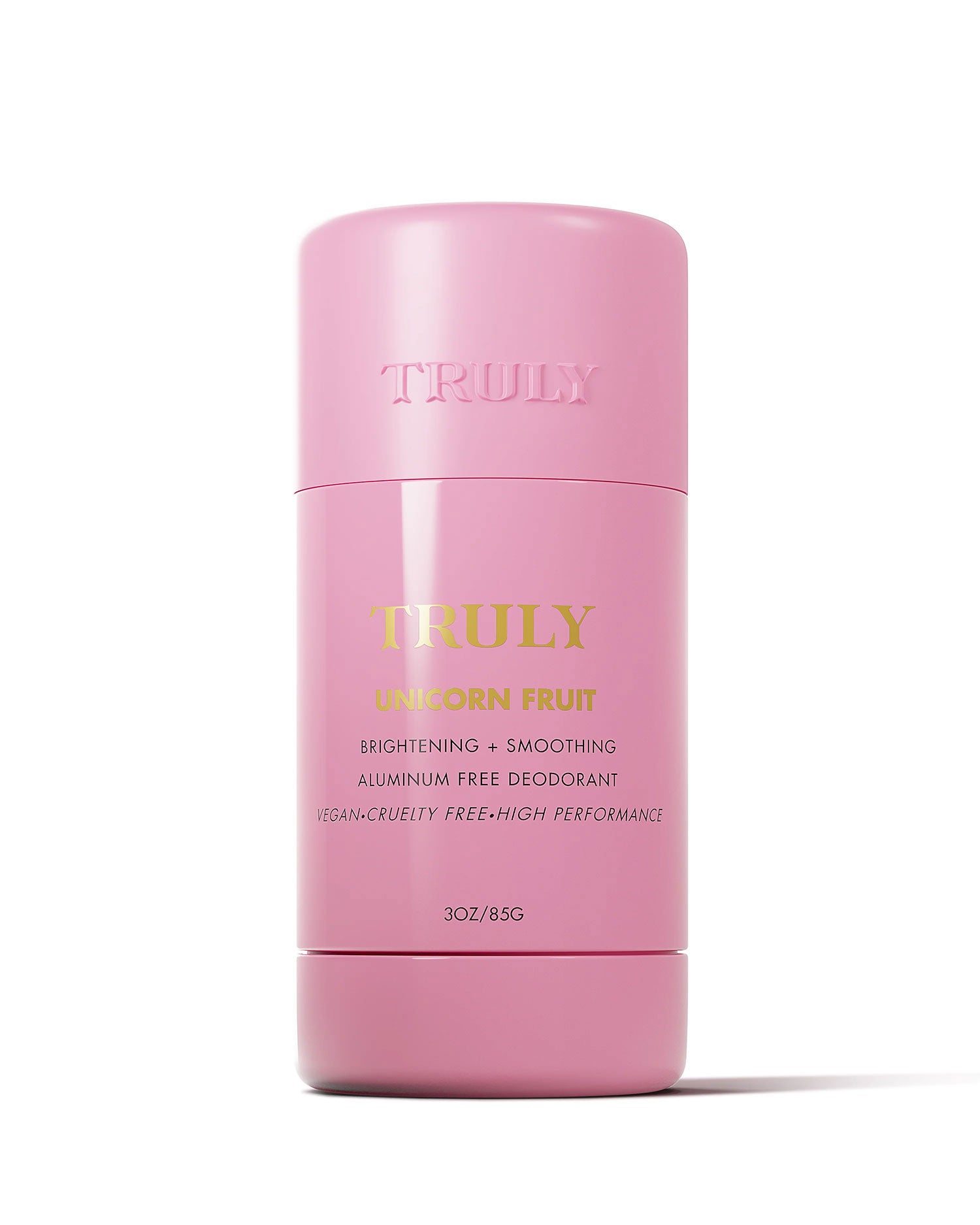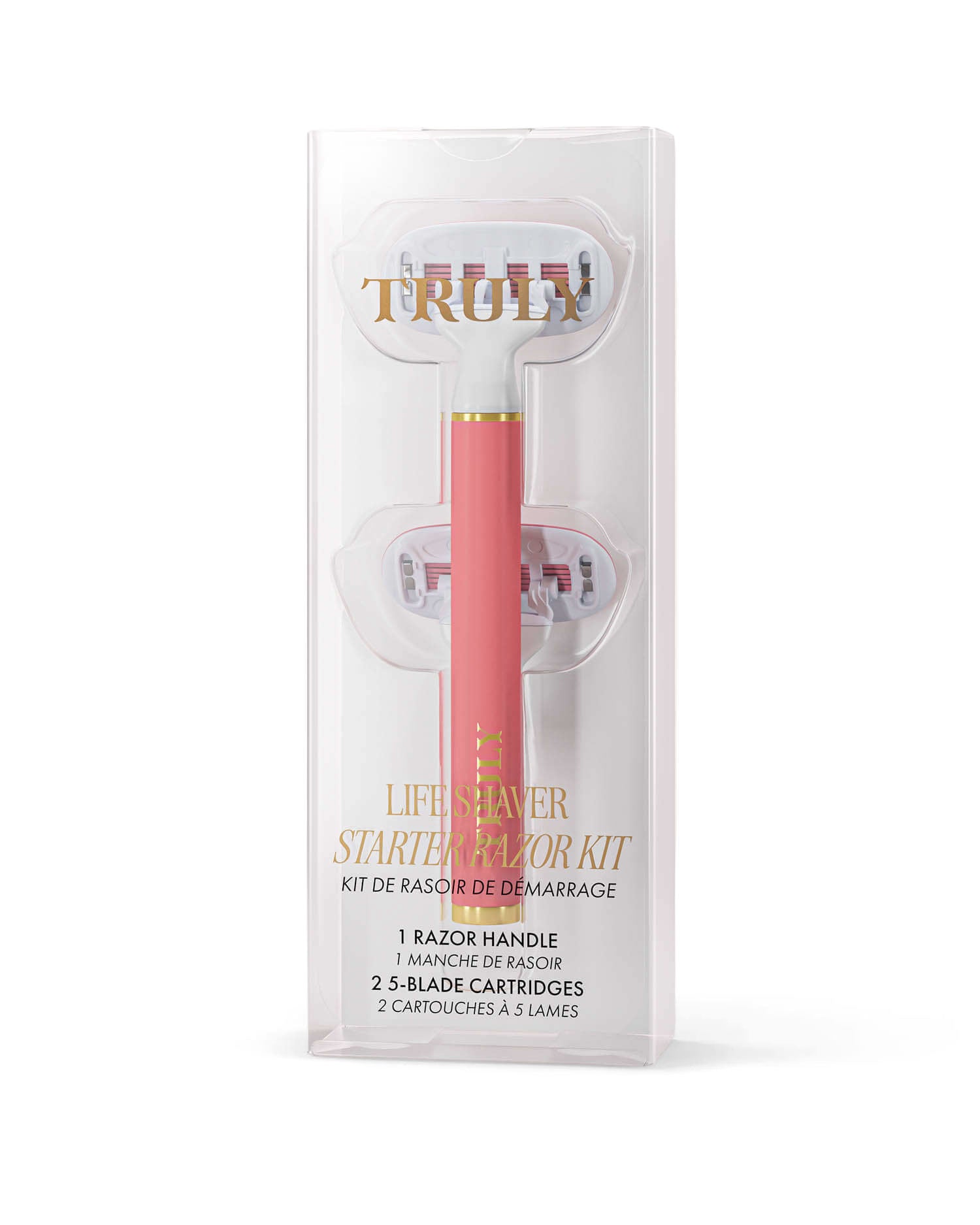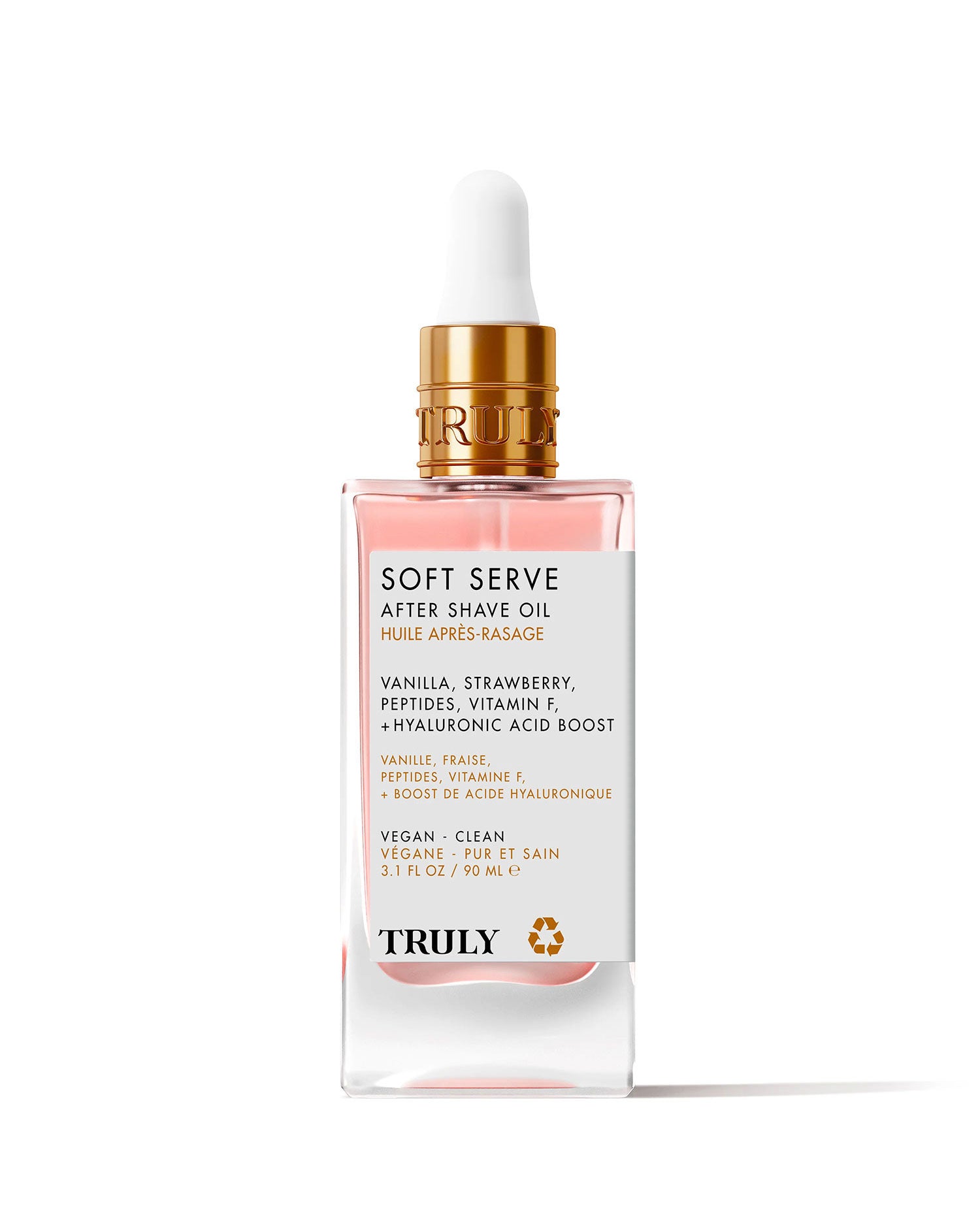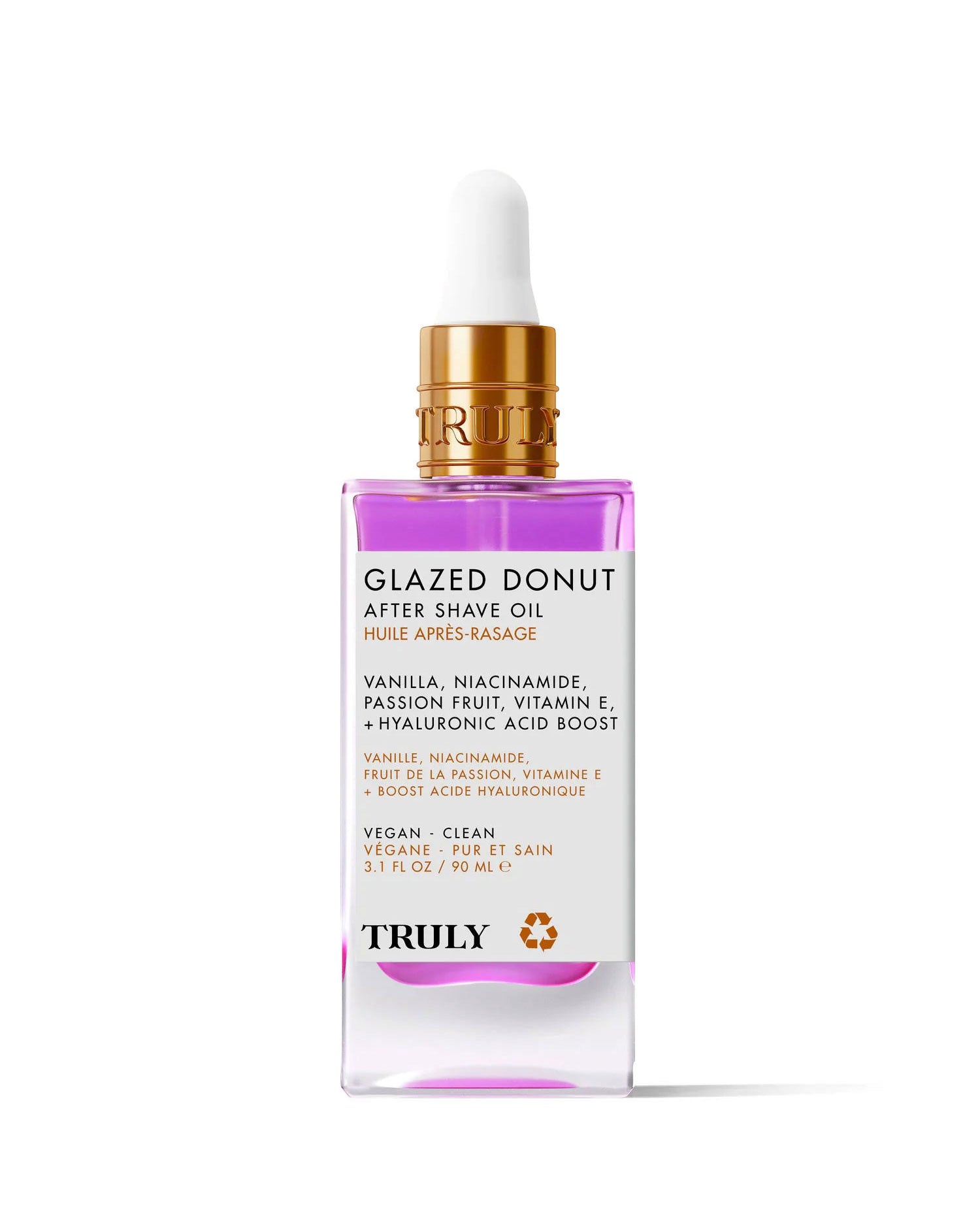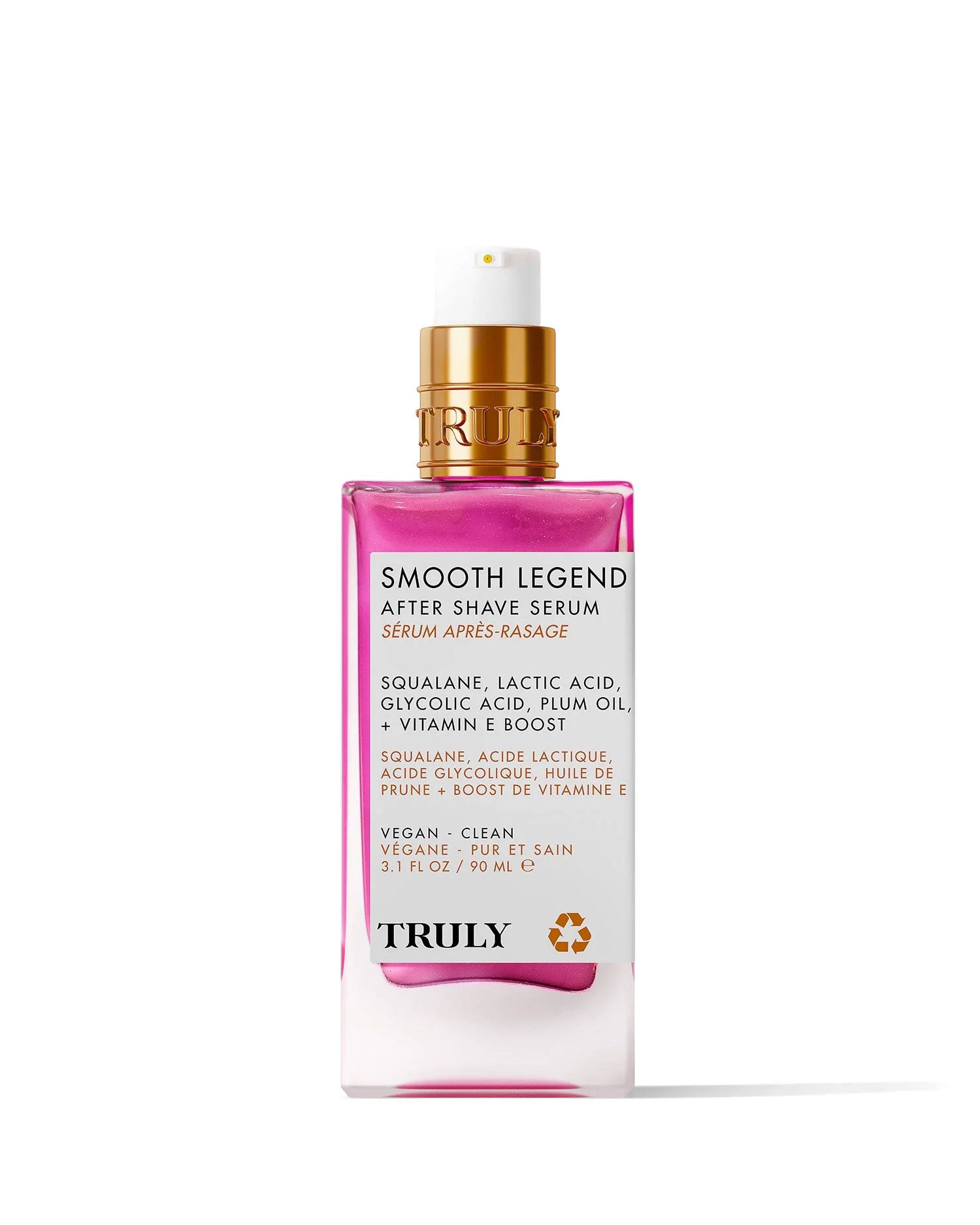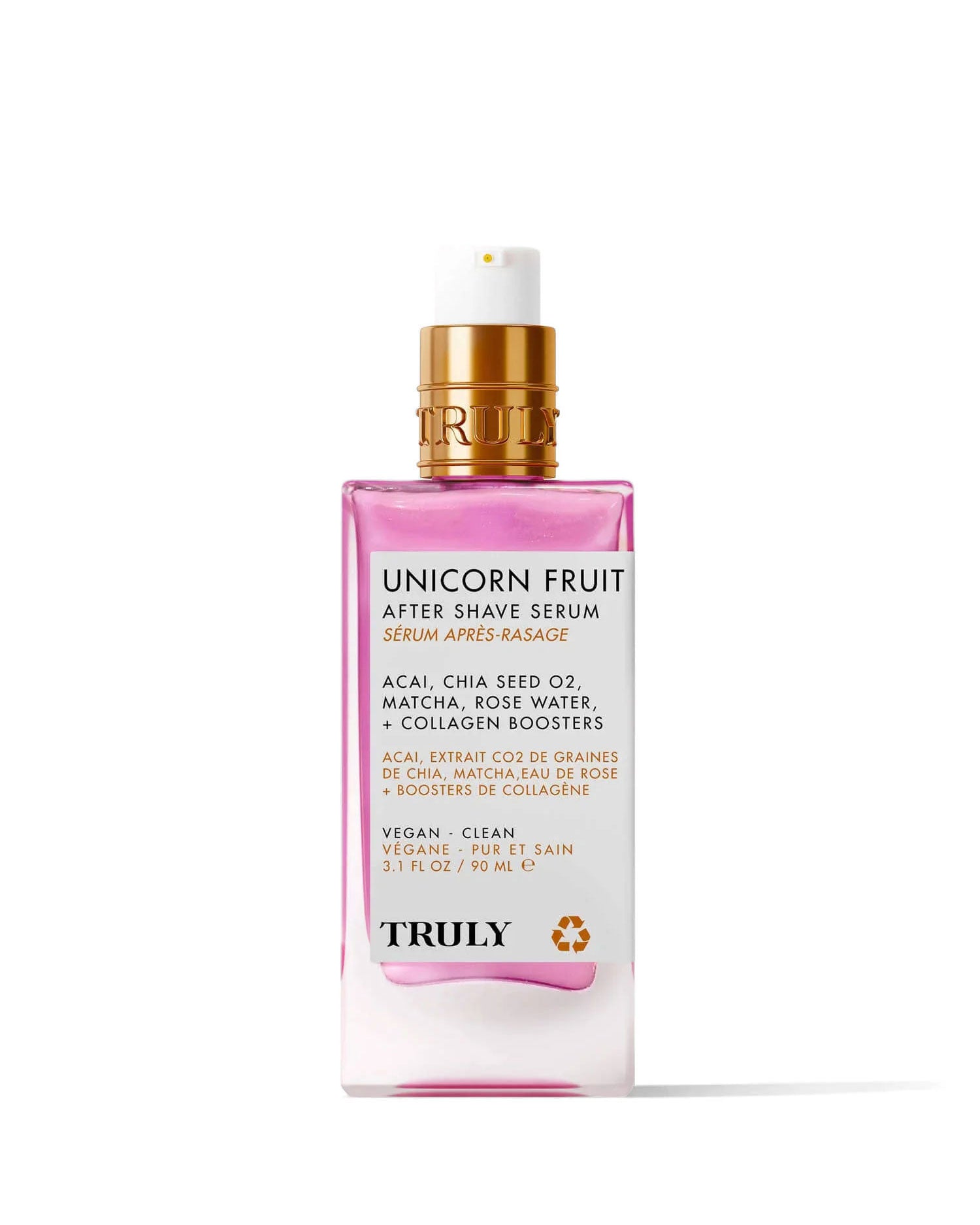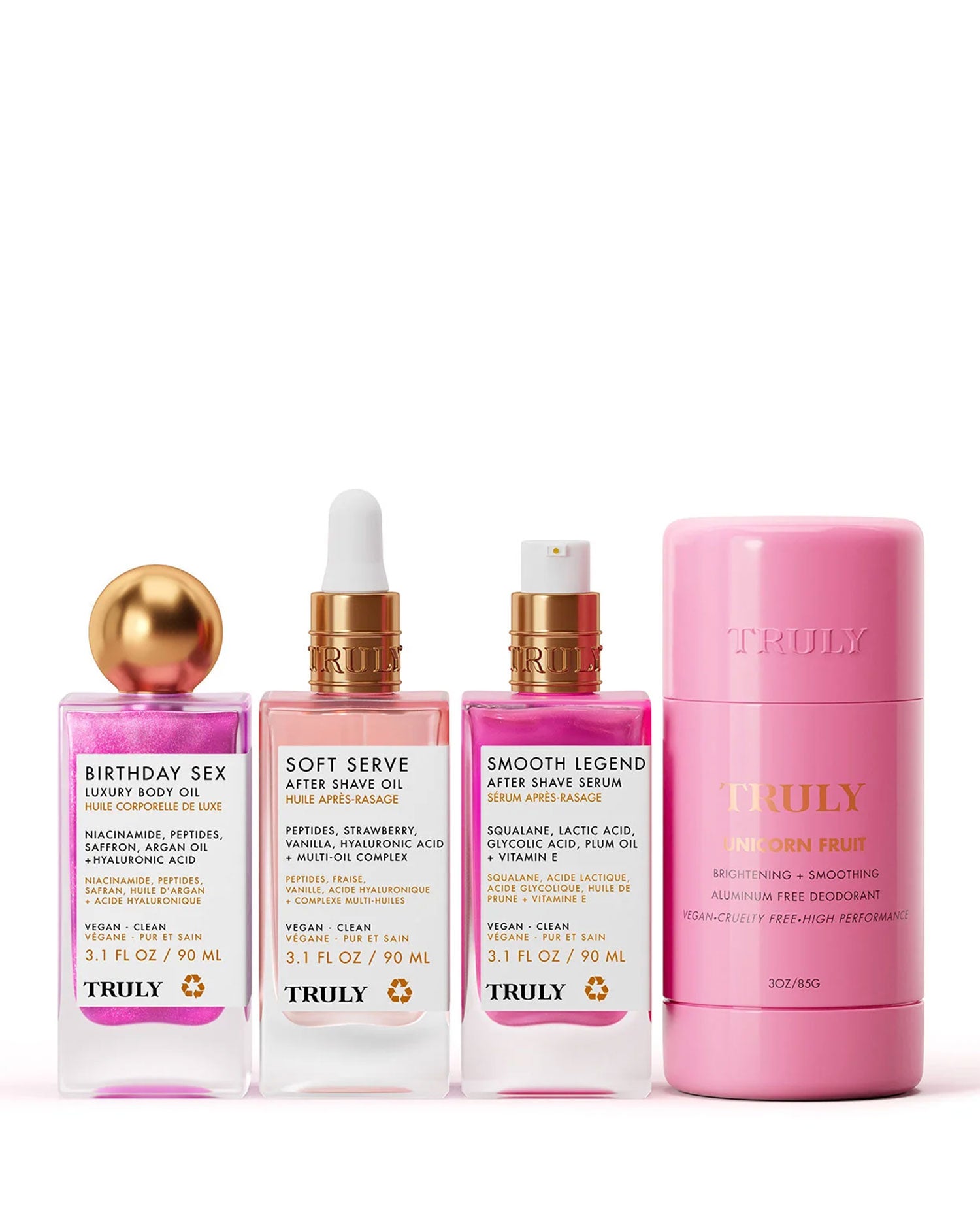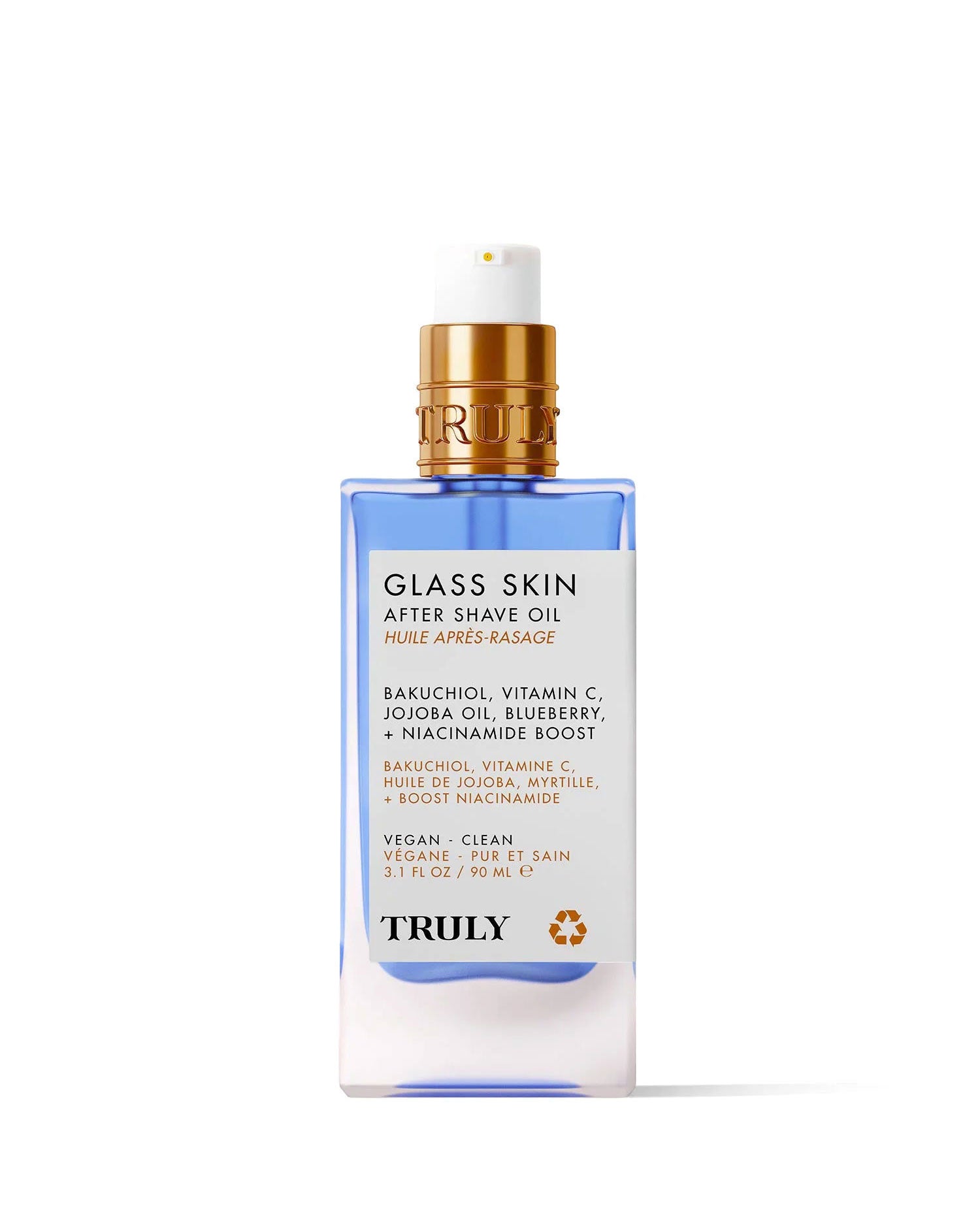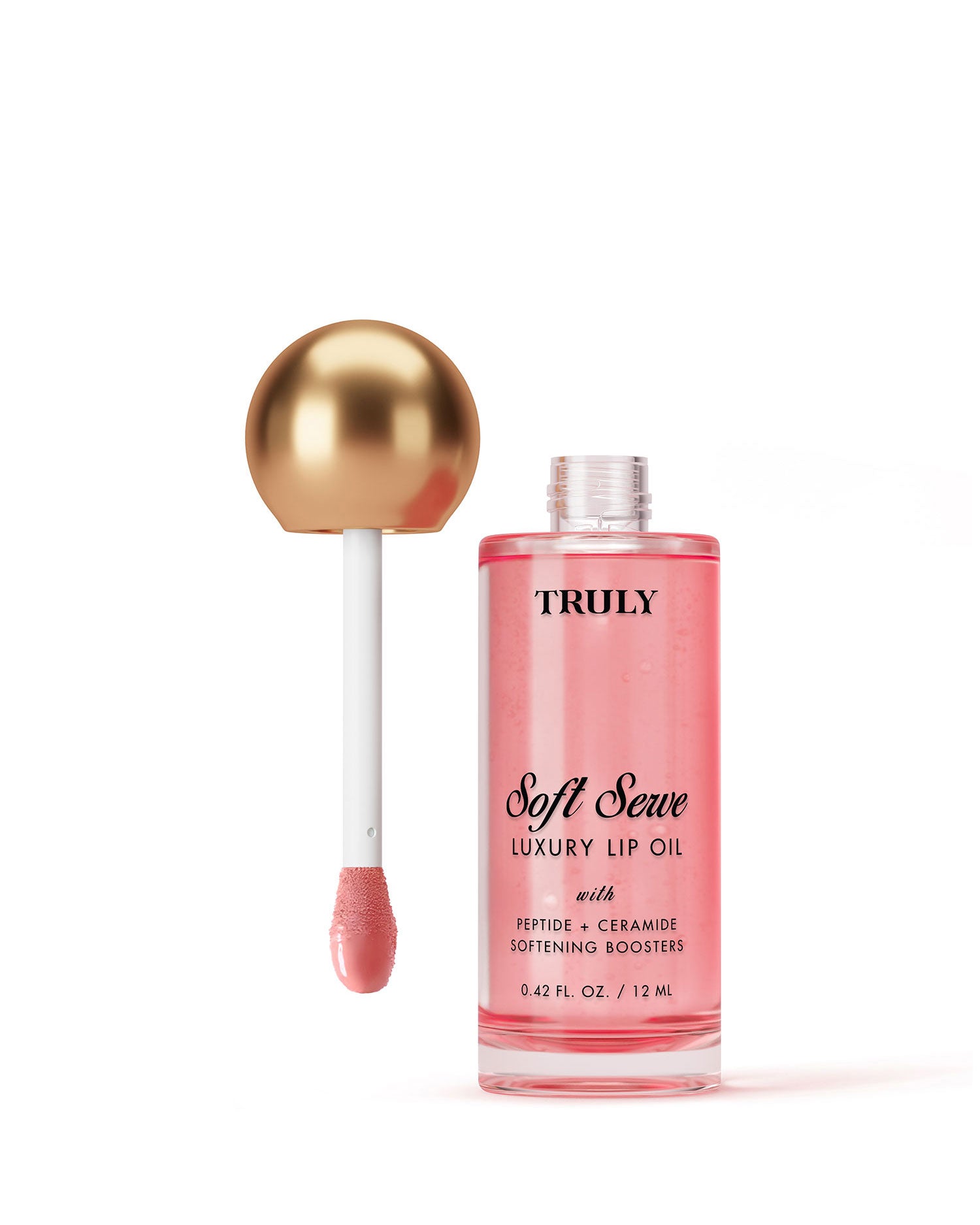How to Prevent Underarm Rash
January 10, 2024
By: Truly Beauty
Discover how to prevent underarm rash so your armpits feel comfy and soothed.
Your underarm skin is delicate so it's not uncommon to experience underarm rashes. It could be your shave. Most likely, it's your deodorant.
If you're not using one already, switch to a clean, aluminum-free deodorant like Truly's Unicorn Fruit Deodorant. A base of antibacterial coconut oil with a nourishing blend of mango & shea butter, it's pure hydration in a bottle for your underarms.
Below, explore what causes underarm rash, how to prevent it, and how to treat it.
How to Prevent Underarm Rash
Want to know how to prevent armpit rash? Here are some tips for stopping a rash from forming in the first place.
1. Switch to a Gentle Deodorant
Some deodorants contain harsh chemicals that can irritate the skin. Especially if you have sensitive skin, you need to be extra careful when choosing deodorants and anti-perspirants as they can be a trigger for underarm rashes. Look for a formula that contains soothing, natural ingredients and avoid harsh chemicals that may irritate your skin.
2. Always Use a Clean, Sharp Razor
Dull razors put extra pressure on the skin, causing irritation and rashes. When shaving, always use a clean, sharp razor which will easily glide across the skin. Using a good razor won’t just prevent underarm rash. It’ll also prevent other shave-related issues like ingrown hairs and razor bumps. Plus, you’ll get a smoother shave as a result.
3. Lather Up With Shave Butter
Shaving cream creates a cushioning between the razor and your skin so your razor can easily glide across without causing friction and ultimately, skin irritation. Opt for a hydrating shave butter with nourishing ingredients like shea butter and coconut oil to soften the skin and hair follicles for a smoother shave.
If you always end up with an itchy underarm rash after shaving, it could be because you’re skipping shaving cream. Always use it before putting razor to skin to ensure a close, irritation-free shave.
4. Wear Loose, Breathable Clothing
Skin irritation from tight clothing happens more often than you would think. The fabrics rub against your skin throughout the day which might lead to an underarm rash. To avoid this, make sure you always wear loose, breathable clothing. This will give your underarms a chance to breathe and avoid the rubbing that can contribute to irritation and rashes.
5. Opt for Fragrance-Free Formulas
If you have sensitive skin, your underarm rash might be down to the skincare products you’re using. Many skincare products contain fragrances that can irritate the skin. Some may even cause allergic reactions (allergic contact dermatitis). The best thing you can do is use unscented products.
By using fragrance-free formulas, your underarm area won’t come into contact with any potential irritants that might cause an itchy rash.
What Causes Underarm Rash in the First Place?
There are several causes of armpit rash, including irritation, eczema, and chafing. One of the most common yet widely overlooked causes of underarm rash is shaving. Shaving incorrectly, that is. If you’re using a dull razor, you need to apply more pressure to the skin which can lead to irritation. Skipping shaving cream also doesn’t help as it increases the friction between your skin and the razor, leaving you susceptible to razor burn and armpit rash.
In addition to poor shaving techniques, chafing can also be a factor. Chafing happens when the skin rubs hard against itself or clothing for a long period of time. Since the armpits are an area where skin folds over itself, you’re more likely to experience chafing there.
Contact dermatitis is another culprit. It occurs when the skin comes into contact with an allergen or irritant, usually from chemicals found in soap, lotion, deodorant, or even laundry detergent. This allergic reaction typically develops within a few hours of exposure to the irritant or allergen.
People with eczema (atopic dermatitis) may also develop underarm rashes. Eczema patches are usually red, dry, cracked and itchy. In addition to eczema, other possible causes of underarm rashes include candida, ringworm, seborrheic dermatitis, and heat rash.
How to Get Rid of Underarm Rash
Now you know how to prevent underarm rash and why it happens in the first place, let’s look at how you can get rid of it. Fortunately, there are many over the counter treatments that can help alleviate different types of rashes. Ahead, some tips on how to treat underarm rash.
Use a Coconut Oil-Based Moisturizer
Virgin coconut oil is an excellent emollient with antibacterial properties and anti-inflammatory activity. Research from 2015 suggests coconut oil may be beneficial for treating skin rashes. Its emollient nature helps soothe and moisturize irritated skin, while its antibacterial properties can combat potential bacterial causes of the rash. Additionally, coconut oil’s anti-inflammatory activity may contribute to reducing redness and inflammation associated with underarm rashes.
Opt for a body lotion or butter like our bestselling Unicorn Fruit Body Butter that's enriched with coconut oil and other nourishing ingredients like shea butter, cocoa butter, and hyaluronic acid to strengthen skin barrier function and seal in moisture.
Try Tea Tree Oil
Tea tree oil can be an excellent armpit rash treatment. With its antibacterial, antifungal, and anti-inflammatory properties, tea tree oil can be effective at soothing irritation while preventing infections. That being said, tea tree oil used alone can be incredibly potent. For that reason, we recommend using a serum or topical formula that contains tea tree oil rather than using it on its own.
Apply Calamine Lotion
Calamine lotion can be effective in treating underarm rashes due to its soothing and anti-itch properties. It contains zinc oxide, which has mild astringent and anti-inflammatory effects, helping to reduce redness and irritation. When applied to the affected area, calamine lotion forms a protective barrier that helps to alleviate itching and discomfort associated with rashes. It also helps to combat dry skin.
Consider Hydrocortisone Cream
Hydrocortisone cream can ease underarm rashes due to its anti-inflammatory properties. It’s also known to be an effective anti-itch cream that can provide relief if you’re dealing with itchiness. Hydrocortisone is a mild corticosteroid that helps reduce redness, swelling, and itching associated with skin irritations, including rashes. When applied topically to the underarm area, hydrocortisone cream works by suppressing the immune response and inflammatory reactions in the skin.
Home Remedies for Underarm Rash
Some of the best home remedies for armpit rash include applying a cold compress to the affected area, taking a cool oatmeal bath, and applying unscented moisturizers to dry, scaly skin twice a day. Research suggests that topical vitamin B12 and sunflower oil may also be helpful for treating an underarm rash.
Do Underarm Rashes Go Away?
Underarm rashes can often go away with appropriate care and treatment, depending on the underlying cause. If the rash is due to irritation from clothing, personal care products or allergens, avoiding the triggering factors may lead to improvement. Using mild, hypoallergenic soaps and moisturizers can also help soothe the skin.
For rashes caused by infections (fungal or bacterial), topical antifungal or antibacterial creams may be prescribed by a healthcare professional. It’s important to complete the entire course of treatment even if symptoms improve before completion.
How to prevent underarm rash? The best way to prevent armpit rash is by mastering your shaving technique and opting for gentle skincare products, as well as wearing loose clothing. If you have a skin condition such as eczema or psoriasis, consult your dermatologist for the best treatment option.
You should also visit your dermatologist or healthcare provider immediately if you’re experiencing severe rashes accompanied with blisters or a burning sensation. They may prescribe a steroid cream to ease your symptoms.
Photo by Cliff Booth, Pexels






